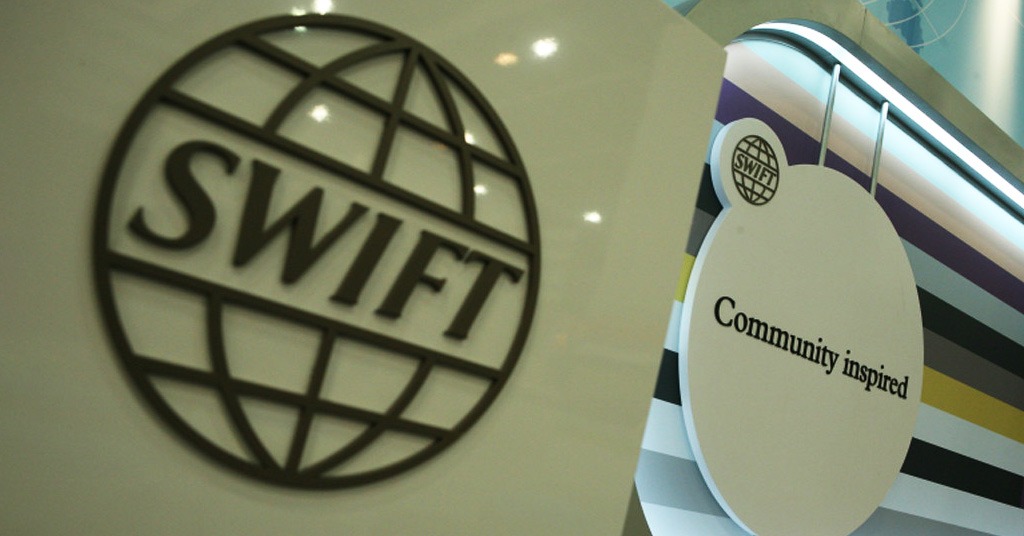Learn how to send and receive money using SWIFT transfers

How to make & accept SWIFT transfers. Source: flickr.com
While people are locked-down inside their country borders, money can still enjoy the freedom of movement.
Despite the predicted slowdown of the remittance industry, migrant workers who haven’t lost their jobs still need to support their families abroad. After all, remittances have sheltered a huge number of vulnerable households, being the focal point of the survival strategies for over 1 billion people.
A SWIFT money transfer is a popular type of international wire transfer. Its symbolic name both denotes the founding organization which is the Society for Worldwide Interbank Financial Telecommunication (initially formed by seven international banks) and hints at the speed of transaction being the archaic word for “quick”.
The closed network of SWIFT provides secure global communication between financial institutions in over 200 countries.
SWIFT gpi – the new standard in global payments – unites over 3700 banks all over the world. This conglomerate platform alone sends more than $100 billion per day in cross-border payments, representing over 30% of SWIFT’s total cross-border payment traffic.
This article explains how to exchange SWIFT wire transfers between family members, friends, colleagues, and any third parties.
SEE ALSO: How to make & accept SEPA transfers
Sending money with SWIFT transfers

Sending money with SWIFT transfers. Source: flickr.com
In order to make a SWIFT transfer, you need to have a current bank account with a sufficient sum of money (don’t forget about the fees).
Next, you must find out:
- name and address of the recipient,
- their International Bank Account Number (IBAN) or ordinary account number (depending on the country),
- the name, address and Bank Identifier Code (BIC) of the beneficiary’s bank,
- the beneficiary’s account type (checking, current, savings, money market, etc.),
- additional details depending on the region, transfer amount and other specific circumstances. E.g. payer and beneficiary tax IDs, detailed payment purpose that may include contract number or order number, etc.
With the required information at hand, you can either visit the nearest branch of your home bank or utilize its website/app. Today, an increasing number of banks are opening online access for the majority of their services. Perhaps, this tendency will remain in effect after the pandemic crisis too.
In any case, you’ll need to fill out all the required information, specify the amount to send, check if everything is correct and authorize the transaction. You’ll receive a receipt as a confirmation (either paper or electronic).
Receiving SWIFT transfers
Those having problems with finding the SWIFT (BIC) code of their bank should attentively check their paper or online bank statements. The necessary data can also be found at the official bank website. A SWIFT code usually consists of 8 or 11 characters. It is made up of numbers and letters used to identify the country, bank and branch that an account is registered at.
If you have provided all the bank details correctly, the transfer will be automatically credited to your card/account. Most likely, you’ll receive a notification about that. Users of the new gpi standards can also track their transfers online.

SWIFT transfers fees. Source: flickr.com
For receiving a SWIFT transfer in foreign currencies, you need to have an account in that respective currency. Otherwise, the transferred amount will be converted according to the bank rate at the time of transfer.
Transfers can appear in the recipient’s account as quickly as a few hours or as long as a week. If the banks involved use SWIFT gpi standards, money is credited to accounts within 24 hours. 40% of gpi payments are credited to the recipient within 5 minutes.
SWIFT transfers fees
The fees for international SWIFT transfers are individual for every institution. Usually, the minimum fee is around $20-30, for bigger sums a certain percentage may be deducted.
Moreover, if the recipient’s and the sender’s banks don’t have a direct business relationship, intermediaries may charge additional fees.
Wire transfers may incur charges on both sides of the transaction with the major part of the cost being attributed to the sender.
In addition, when you deal with accounts in different currencies, an exchange rate will be applied.

How does SWIFT work. Source: flickr.com
According to rough estimations, SWIFT transfers in Europe can cost you around £30 to £50 in total.
However, according to MyBankTracker, US banks may charge up to $85 on the outgoing transaction and up to $30 for the incoming transfer.
How does SWIFT work
With the help of the SWIFT messaging system, two or more banks securely connect and share all the required sensitive information.
SWIFT as an organization transports financial messages, but does not hold accounts for its members. Neither does it perform any form of funding, clearing, or settlement. The communication system sends payment orders, which must be settled by correspondent accounts that institutions have with each other.
SWIFT wire transfers are not too competitive in their pricing policies, yet they are highly reliable and since recently quite quick (thanks to gpi). Therefore, the interbank organization handles half of the world’s high-value cross-border payments.
In 2018, all banks using the SWIFT messaging platform were required to comply with a new cybersecurity framework which was developed after the series of cybercrimes against SWIFT member banks. The notorious theft at the Bangladesh bank which lost $81 million made SWIFT improve their protective measures.
Members are now required to implement features such as multi-factor authentication, continuous monitoring and anomalous behavior detection, security awareness training, and incident response plans.
SEE ALSO:









